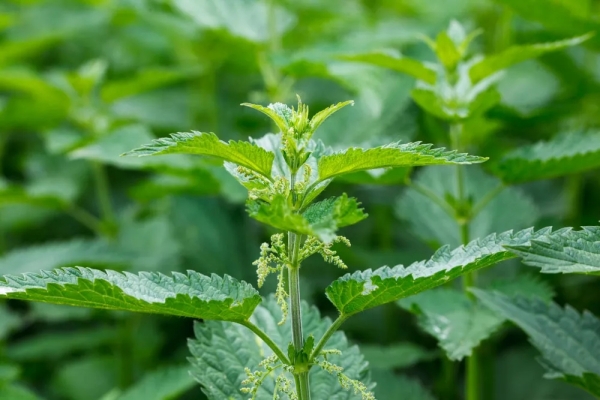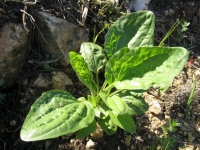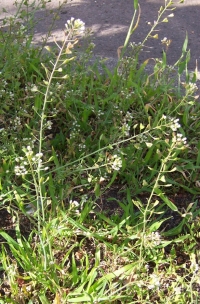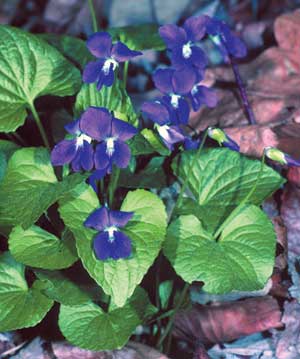More Edible Invasives - Vegetable Greens at Your Backdoor
by George Powell
Spring has sprung
The grass has ris’,
I wonder where my backyard produce is.
Although the grass has not yet sprung forth in the corner of Great White North where I reside, it soon will be on the way. Spring is an excellent time to reacquaint yourself with the wonders of nature. And foraging for salad and cooking greens is not only a rite of spring, it also spices up one’s diet.
The Epicurian’s Lawn
In a previous article (Edible Invasives – Eat Your Garden and Lawn Weeds) I covered dandelions, wild mustard, chickweed, lamb’s quarters, purslane and red clover. And now, by popular demand, I’ve assembled four more backyard ‘weeds’ that are also exotic epicurian edibles. These are guaranteed to add diversity to your diet. And they can save you a few dollars on groceries. Not to mention that they put you a few steps forward on a zero-mile diet.
Many of these edible invasives are best consumed early in the growing season, as they can become bitter with age, making spring the best time to harvest.
Safety First
First, in the interest of safety, let me reiterate my previous warnings on foraging for edible weeds:
- Not every weed is edible, and indeed, some are poisonous. Proper identification of prospective food plants is essential. If you have any reservations as to the identity, play it safe and don’t eat it.
- Always wash your greens before eating them and don’t pick any that have been directly or indirectly subjected to pesticides.
- Don’t eat plants from public boulevards, parks, playing fields, ditches, or any other area where you don’t know with certainty that they are free of unseen contamination.
Edible Invasives
With safety in mind, why not try some of these edible invasives:
Stinging Nettle, Urtica dioica

The name doesn’t suggest a great food option. But stinging nettles, when handled and prepared properly, offer great spring fare.
Stinging nettle is a perennial herb, growing up to 1-m tall from yellow-coloured rhizomes and stolons (underground stems). The strongly-toothed leaves, range from 3- to 15-cm long and are borne in alternating, opposite pairs on erect green stems. This nettle bears numerous small green to brownish flowers in dense bundles. The leaves and stems are very hairy with both non-stinging and stinging hairs.
The nettles contain chemicals that can sting and irritate. Wear gloves and long-clothing to prevent skin contact during harvest and handling. Nettle leaves are delicious cooking greens and are rich in vitamin K. Gather young leaves before plants reach 30-cm tall. When mature, nettle becomes increasingly tough and inedible. Cooking destroys the stinging properties of the nettles. Try using nettle as a replacement for spinach in spinach soup recipes.
Common Plantain, Plantago major

This common lawn and roadside plant sends up groups oval, dark green leaves, 10-cm long, from short, tough rootstock. The leaves are thick, strong and fibrous when mature, with 3 to 7 or more ribbed veins extending from a long reddish leaf stalk (aka the petiole). Harvest young leaves early in spring before they thicken and become stringy. Leaves can be eaten raw in salads or boiled, blanched, steamed or sauteed.
Sheperd’s Purse, Capsella bursa-pastoris

This garden and pasture weed looks somewhat like wild mustard. And it has the same sharp, peppery taste. The lobed-leaves grow in a basal rosette. Stems emerge from this base and grow between 20 and 50 cm tall, and bear a few pointed leaves which clasp around the stem. Small, white flowers produce distinctive heart-shaped seed pods.
Only use early spring growth – these plants become increasingly bitter-tasting with age. Sheperd’s purse is a popular cooking herb in China, Korea and Japan. Try it sliced and stir-fried with a mix of other vegetables and mushrooms.
Common Meadow Violet, Viola sororia

These tiny, 4 to 10 cm tall, perennial plants appear stemless, because leaf stalks emerge from below ground level. The heart-shaped leaves are hairless and have rounded teeth along the margins. Purple or occasionally white flowers form on leaf-less stalks.
More common in eastern North America, these free seeding plants are one of the earliest spring flowers in many areas. Both the flowers and leaves are edible and can be used when young in salads or as garnish. Candied violet flowers can be made by preserving newly opened blooms with a coating of egg white and crystallized sugar.

Two comments on “More Edible Invasives”
Leasia Korbel 18 April 2011 at 3:40 pm
Thanks for these, I hope you continue to add more yard plants to the list!
George Powell (responding to Leasia Korbel) 18 April 2011 at 4:43 pm
You are welcome Leasia. Glad you found the post useful.
Comments are closed.
Subscribe via RSS
